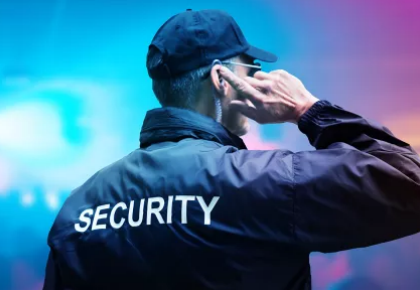
On 15 May 2025, the webinar ‘From Risk to Preparedness: Creating a Trade Show Security Strategy That Can Withstand Stress’, hosted by the Society of Independent Show Organisers (SISO), was successfully held. The seminar brought together four industry executives, including Mike Carlucci, COO of Clarion Events; Mike Grant, SVP of Operations at RX Global; Dan Donovan, Founder and Managing Partner of Stratoscope/Ingressotek/Stratoscope K9; and Dan Kennedy, Founder and Managing Partner of Stratoscope/Ingressotek/Stratoscope K9, Miami Beach. Donovan, and Freddie Peterson, General Manager of the Miami Beach Convention Center, discussed risk assessment, practical security applications, and crisis response strategies in the field of trade show security, and provided attendees with insights and best practices for implementing effective security measures at different levels of experience and budget.
Here are 9 key lessons from this seminar to help show organisers build a comprehensive and effective security strategy:
1. Plan ahead
Safety planning should start months in advance, not just days before the event.
Incorporate safety considerations into the initial design and layout of the event.
Involve the security team in early venue layout discussions to optimise entrances, exits and people flow.
Conduct a thorough site-specific assessment that considers the type and size of the event, the characteristics of the audience and exhibitors, the requirements of the speakers/keynote speakers, and the local geopolitical climate.
‘The key to effective trade show security is planning ahead,’ Peterson says, ’It's not OK to start thinking about a security plan three days before the event, but rather months or even a year before the event.’
2 Implement a layered security approach
Conduct a risk assessment, including:
Evaluate specific potential threats against your event.
Consider protests and social climate.
Assess bottleneck points and vulnerabilities.
Systematically assess the security needs of the event.
‘I would divide the risk assessment into five categories,’ Peterson says, ’One is a venue-specific assessment that considers the type of event, audience characteristics, exhibitor characteristics, guests, sessions, speakers, keynote speakers, and so on. Two is geopolitical and social climate - this is very important and must be taken into account.’
He continues, ‘It's not just the risk of the event centre that has to be considered, but also the whole process from the hotel to the venue. Look at the local community, whether attendees will be walking or travelling by shuttle bus, etc., to ensure a more holistic approach to safety.’
3 Working with stakeholders
Collaborate with the following parties:
Local law enforcement.
Fire and rescue teams.
Convention centre security.
Hotel partners.
Destination management organisations.
Convention and visitors bureaus.
‘You're bringing the event to a city, maybe every year, so you can apply pressure in the friendliest way possible,‘ Donovan says, “by saying, ”We're making an economic impact on your destination every year!’ ...... we need your help.'’
4. Optimise security investments
Develop ‘smart budgets’ that include intelligent tracking, goal-based planning and flexible allocation:
Increase management oversight of security personnel.
Add senior security coordinators to oversee contract security personnel.
Invest in appropriate authentication systems.
Consider modern screening techniques.
Implement cost effective measures by
Utilising existing site surveillance systems.
Utilising local law enforcement resources.
Implement clear communication protocols.
Develop a detailed incident response plan.
5. Establish a framework for communication
Establish clear protocols by
Defining the decision-making chain.
Developing a unified communication strategy.
Identify key stakeholders for emergency response.
Develop pre-planned response scenarios.
‘Make sure your security plans are integrated, not just transactional,’ Peterson says, ’and incorporate them into everything you need to do, and that includes keeping employees well informed and prepared.’
6 Consider the attendee experience
Key considerations include:
Design security measures that won't disrupt the flow of the event.
Plan entry points to reduce congestion.
Actively communicate security measures.
Remember that most attendees now expect and appreciate visible security measures.
‘Regardless of what type of show we're hosting, attendees expect security measures,’ Donovan says, ’and if they come to a show, look around, and don't see any signs of security measures, they may feel uneasy about the show. By adding the layer of security they expect and want to see at an event, you change the entire guest experience.’
7 Prepare for common challenges
Be prepared for the following scenarios:
Protests.
Medical emergencies.
Crowd management issues.
Natural disasters.
Cybersecurity threats.
Weapons issues.
8. Implementing best practices
These are six recommendations from the presenters:
Map the flow of activities and identify coverage gaps.
Develop a comprehensive risk assessment.
Develop a unified communication strategy.
Fully train employees on emergency procedures.
Test and rehearse response scenarios.
Periodically review and update the plan.
9. Final Tips
The presenters shared the following additional tips:
Document all security procedures and protocols.
Update the emergency response plan regularly.
Maintain open communication with all stakeholders.
Pay attention to local conditions and potential threats.
Consider conducting tabletop exercises with key team members.
Trade show security is not just a checklist item, but an ongoing, collaborative effort between all stakeholders that requires constant attention and adaptation. Think of it as an invisible layer of protection for collaborative efforts - attendees may not see them, but knowing they are there gives them more confidence.
 Ministry of Commerce of the People's Republic of China
Ministry of Commerce of the People's Republic of China 